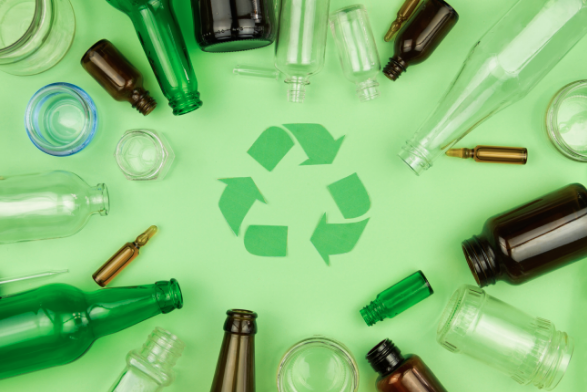Light bulb recycling is the process of collecting and properly disposing of used or broken light bulbs to minimize their environmental impact. Light bulbs, particularly certain types such as fluorescent lamps and compact fluorescent lamps (CFLs), contain small amounts of hazardous materials, including mercury, which can be harmful if released into the environment.
Here are some important points to consider regarding light bulb recycling:
Types of light bulbs: Different types of light bulbs require specific recycling methods due to their varying compositions. The most common types include incandescent bulbs, CFLs, LEDs, and fluorescent tubes.
Incandescent bulbs: These traditional bulbs do not contain hazardous materials and can be safely disposed of in regular household waste. However, it is always a good practice to check local regulations, as some areas may have specific guidelines.
CFLs and fluorescent bulbs: CFLs and fluorescent bulbs contain a small amount of mercury vapor, which is why they require special handling. Recycling programs for these bulbs are available in many regions, typically through designated drop-off locations or recycling centers.
LEDs: Light-emitting diode (LED) bulbs do not contain hazardous materials, but they are made of components like glass, plastic, and metals that can be recycled. Recycling options for LEDs may vary depending on your location. Check with your local recycling center or municipality for specific guidelines.
Recycling options: Many communities have established recycling programs for light bulbs, including dedicated drop-off locations at recycling centers, retail stores, or municipal facilities. Some manufacturers or retailers may also offer take-back programs for specific types of light bulbs.
Recycling process: The recycling process for light bulbs typically involves separating the different components for recycling. For example, fluorescent tubes are crushed to recover the mercury and other materials. The glass, metal, and plastic parts of CFLs and LEDs can also be recycled separately.
Safe handling: When handling broken bulbs, especially CFLs and fluorescent tubes, it's important to take precautions to minimize exposure to mercury vapor. Avoid direct contact with the broken glass or powder, and use gloves or a plastic bag to handle the debris. Properly ventilate the area, and consult local guidelines for cleanup and disposal procedures.
Disposal as e-waste: In some cases, light bulbs that cannot be recycled may be classified as electronic waste (e-waste) and should not be thrown in regular trash. E-waste disposal programs or collection events may be available in your area for safe disposal of these items.
Remember to check the recycling options and regulations specific to your location, as they can vary. Local recycling centers, municipal websites, or environmental organizations can provide information on how to recycle light bulbs responsibly in your area.
Get More Info : Light Bulb Recycling
Thursday, May 11, 2023
Light Bulb Recycling
Subscribe to:
Post Comments (Atom)
GLASS – Possible to recycle Infinitely| Innovative Circular Economy Solutions in Dubai
Glass is a non-crystalline, often transparent, amorphous solid that has widespread practical, technological, and decorative application. G...

-
Glass is a non-crystalline, often transparent, amorphous solid that has widespread practical, technological, and decorative application. G...
-
Textile/fabric recycling is the reprocessing of the non-usable fabric to a usable form. Overall fabric waste has risen sharply due to the ...
-
Light bulbs after it’s life-period are usually thrown away and not recycled, which then ends up in landfills where the chemicals containe...

No comments:
Post a Comment